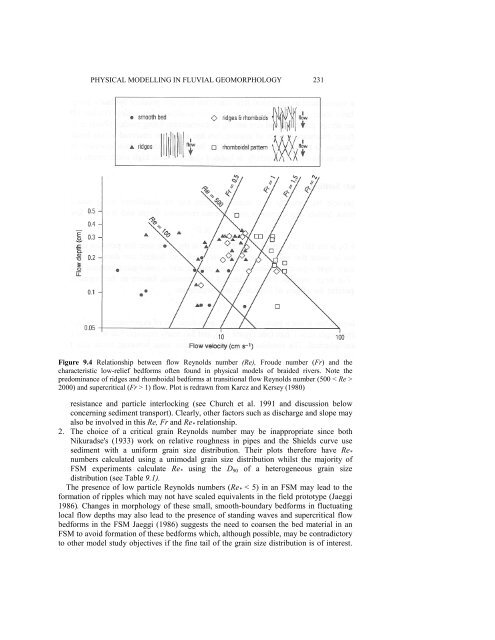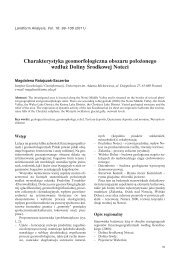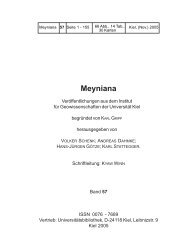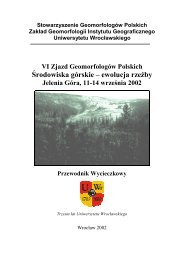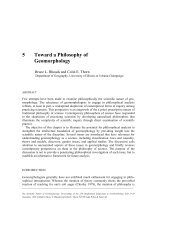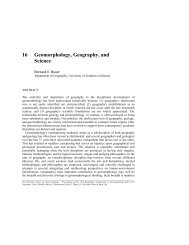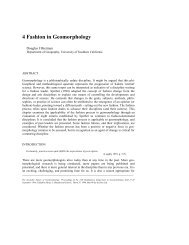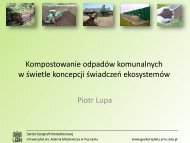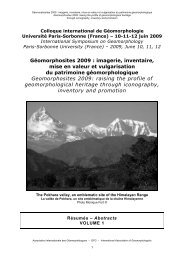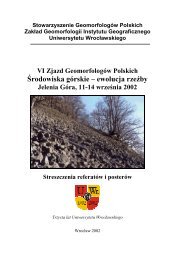Physical Modelling in Fluvial Geomorphology
Physical Modelling in Fluvial Geomorphology
Physical Modelling in Fluvial Geomorphology
Create successful ePaper yourself
Turn your PDF publications into a flip-book with our unique Google optimized e-Paper software.
PHYSICAL MODELLING IN FLUVIAL GEOMORPHOLOGY 231<br />
Figure 9.4 Relationship between flow Reynolds number (Re), Froude number (Fr) and the<br />
characteristic low-relief bedforms often found <strong>in</strong> physical models of braided rivers. Note the<br />
predom<strong>in</strong>ance of ridges and rhomboidal bedforms at transitional flow Reynolds number (500 < Re ><br />
2000) and supercritical (Fr > 1) flow. Plot is redrawn from Karcz and Kersey (1980)<br />
resistance and particle <strong>in</strong>terlock<strong>in</strong>g (see Church et al. 1991 and discussion below<br />
concern<strong>in</strong>g sediment transport). Clearly, other factors such as discharge and slope may<br />
also be <strong>in</strong>volved <strong>in</strong> this Re, Fr and Re* relationship.<br />
2. The choice of a critical gra<strong>in</strong> Reynolds number may be <strong>in</strong>appropriate s<strong>in</strong>ce both<br />
Nikuradse's (1933) work on relative roughness <strong>in</strong> pipes and the Shields curve use<br />
sediment with a uniform gra<strong>in</strong> size distribution. Their plots therefore have Re*<br />
numbers calculated us<strong>in</strong>g a unimodal gra<strong>in</strong> size distribution whilst the majority of<br />
FSM experiments calculate Re* us<strong>in</strong>g the D90 of a heterogeneous gra<strong>in</strong> size<br />
distribution (see Table 9.1).<br />
The presence of low particle Reynolds numbers (Re* < 5) <strong>in</strong> an FSM may lead to the<br />
formation of ripples which may not have scaled equivalents <strong>in</strong> the field prototype (Jaeggi<br />
1986). Changes <strong>in</strong> morphology of these small, smooth-boundary bedforms <strong>in</strong> fluctuat<strong>in</strong>g<br />
local flow depths may also lead to the presence of stand<strong>in</strong>g waves and supercritical flow<br />
bedforms <strong>in</strong> the FSM Jaeggi (1986) suggests the need to coarsen the bed material <strong>in</strong> an<br />
FSM to avoid formation of these bedforms which, although possible, may be contradictory<br />
to other model study objectives if the f<strong>in</strong>e tail of the gra<strong>in</strong> size distribution is of <strong>in</strong>terest.


